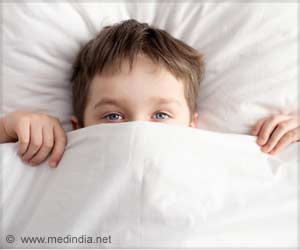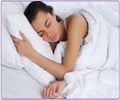Reduced physical activity and increased sedentary lifestyle independently contribute to the development of obstructive sleep apnea (OSA), revealed a new study.
- Obstructive Sleep Apnea (OSA) is a condition where breathing stops for a short period during sleep leading to choking and repeated awakening from sleep
- A new study evaluated the relationship between levels of physical activity, sedentary behavior and OSA risk
- Physical activity and sedentary lifestyle are independently associated with OSA risk
People with a sedentary lifestyle and reduced physical movement are more at risk of developing obstructive sleep apnea (OSA) mediated byvarious metabolic factors.
Read More..
Obstructive Sleep Apnea (OSA)
OSA is a condition where breathing is stopped for a short period during sleep that reduces oxygen supply. The major symptoms are loud snoring, daytime sleepiness, pauses in breathing while asleep, and episodes of waking at night feeling short of breath or gasping for air.
It is estimated that around 1 billion adults aged 30-69 years are affected by mild to severe OSA globally.
Serious complications associated with poorly managed OSA include an increased risk of high blood pressure, stroke, heart attack, irregular heartbeat, and type 2 diabetes.
The major risk factors for obstructive sleep apnea are obesity, a family history of snoring or apnea, and being male.
New Risk Factors Association
A new study published in the European Respiratory Journalby investigators from Brigham and Women's Hospital examined the relationship between an active lifestyle and the risk of obstructive sleep apnea (OSA).
They analyzed the health data from more than 138,000 US men and women over a period of 10-to-18 years. 8,733 participants were reported to have OSA diagnoses at the end of follow up period.
Participants with moderate and vigorous physical activity were examined separately. Though both were strongly correlated with a lower risk of OSA, the participants with a higher activity level had a 54% lower risk of developing OSA.
- People who spent more than four hours per day sitting watching TV had a 78% higher OSA risk than the least sedentary people
- People who did sedentary work had a 49% increased risk of OSA compared with the least sedentary people.
"We found that physical activity and sedentary behavior are independently associated with OSA risk," said Huang, an Associate Epidemiologist at the Brigham.
This study also differs from previous studies because of its large sample size and detailed assessment of physical activity and sedentary behavior. The research team was able to take many associated factors into account, making the findings more credible.
Based on the study findings, investigators encourage physicians to highlight the benefits of physical activity to lower OSA risk among people.
Future Perspective
All collected data in this study about OSA diagnosis and physical activity or sedentary behavior, were self-reported. Mild OSA is often challenging to detect and can remain clinically unrecognized.
Furthermore, only recreational physical activity was considered, leaving out any physical activity in occupational settings. Sedentary behavior was only counted as sitting while watching TV and sitting away from home or at work.
The next step in this research should collect data using actigraphy, home sleep apnea tests and polysomnography, rather than self-reports.
Lifestyle Remedies
Simple lifestyle interventions can help people with obstructive sleep apnea.
Regular exercise - As obesity increases the risk of airway obstruction and narrow nasal passages that lead to OSA, maintaining a healthy weight with regular exercise is important to prevent sleep apnea. It also improves respiratory strength and encourages oxygen flow to reduce the symptoms of sleep apnea.
Altering sleep position - For some people, OSA occurs when they sleep on their back. In such individuals, sleeping on the side can help ease breathing.
Avoid alcohol and smoking - Alcohol relaxes the throat muscles that control your breathing leading to sleep apnea. Alcohol can also cause inflammation in your airways, blocking your airflow. Tobacco use also worsens sleep apnea symptoms by contributing to inflammation and swelling in the airways. So, avoid smoking and drinking alcohol habit to improve the sleep quality.
Use humidifiers – As dry air canrestrict airways to increase congestion and difficulty in breathing, the humidifiers that add moisture to the air can reduce sleep apnea risk. For added benefits, lavender, peppermint, or eucalyptus oil can be added to a humidifier. These three essential oils have known anti-inflammatory and soothing benefits.
Use oral appliances - Oral appliances can help with sleep apnea by repositioning your jaw or tongue to keep the airway open during sleep. The two major appliances are mandibular advancement devices and tongue stabilizing devices. These work by moving your lower jaw or tongue forward to decrease the obstruction in the back of our throat. These appliances range from low-cost, over-the-counter (OTC) options to devices that are custom-fit by a dentist.
Although OSA can be managed with modern treatments, the focus should be on prevention. Health professionals should prioritize prevention and support people who are at-risk of developing OSA to be more active.
This study adds to the evidence on the importance of maintaining an active lifestyle on preventing OSA, and it is encouraging that even a small increase in physical activity or reduction in sedentary hours can reap potential benefits.
References:
- Sleep Apnea - (https://healthysleep.med.harvard.edu/sleep-apnea/)
- Treatments for Obstructive Sleep Apnea - (https://www.sleepfoundation.org/sleep-apnea/obstructive-sleep-apnea/treatments)
- Obstructive sleep apnea - Adults - (https://medlineplus.gov/ency/article/000811.htm)
Source-Medindia
















